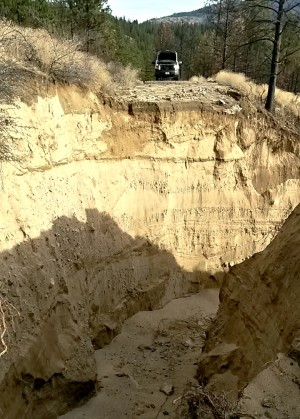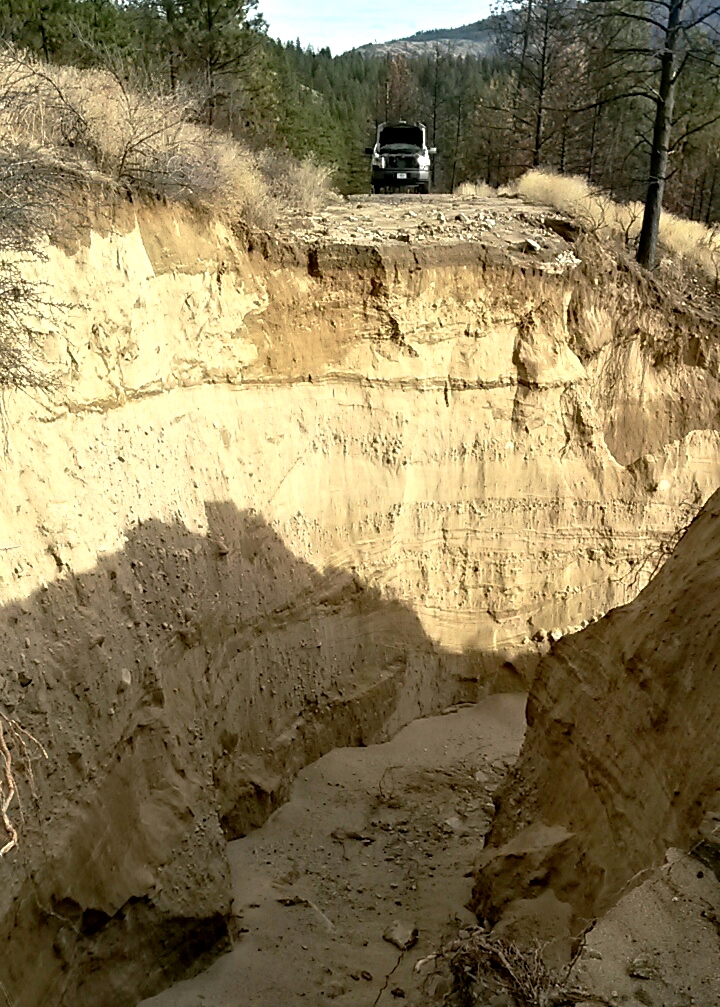WENATCHEE – Across the Forest, crews are reporting substantial road damages and washouts caused largely by flooding from heavy snowpack melt and continued spring rains. Popular roads such as the South Fork Tieton Road near Naches, Cow Creek Road near Twisp and Bailey Creek Road near Tonasket are completely impassable and could require extensive, long-term repairs.


Crews are currently repairing extensive road damage from 2016 flooding on the Cougar Creek Road near Winthrop, Wash.
“Public safety is our top priority as washouts occur on the Forest,” said Naches District Ranger, Kelly Lawrence. “Right now many roads are severely damaged and cannot be reopened until it is safe to do so.”
Currently, Forest engineers and crews are working to document damage, make small repairs where they are able and prepare assessments to secure additional funding if eligible. Massive washouts, such as one nearly 100 foot long and 50 foot deep on the South Fork Tieton Road, will require extensive design, engineering and environmental analysis to develop a solution for decades to come.
“Together with our partners, we are seeking long-term, sustainable solutions to this chronic road issue,” added Lawrence. “The South Fork Tieton Road requires more than a quick, band-aid repair and unfortunately may not re-open this summer.” However crews will be working throughout the spring and summer to repair hundreds of miles of roads, clear culverts, and clear debris slides. Forest users can help too:
- Know current conditions and closures before you go by visiting www.fs.usda.gov/okawen or calling your local Ranger Station.
- Protect Forest roads by not driving in wet, muddy conditions. Roadbeds at higher elevations where the snow is just melting off are saturated and road shoulders are very soft and easily give way.
- When reporting damages to your local Ranger Station, please provide the road number, milepost number and/or nearest stream crossing.
Get the latest forest news and alerts by texting ‘follow OkaWenNF’ to 40404, ‘liking’ us on facebook or following us on twitter @OkaWenNF. The mission of the USDA Forest Service is to sustain the health, diversity, and productivity of the nation’s forests and grasslands to meet the needs of present and future generations.








